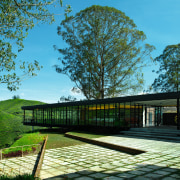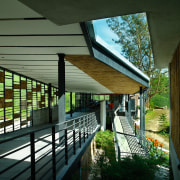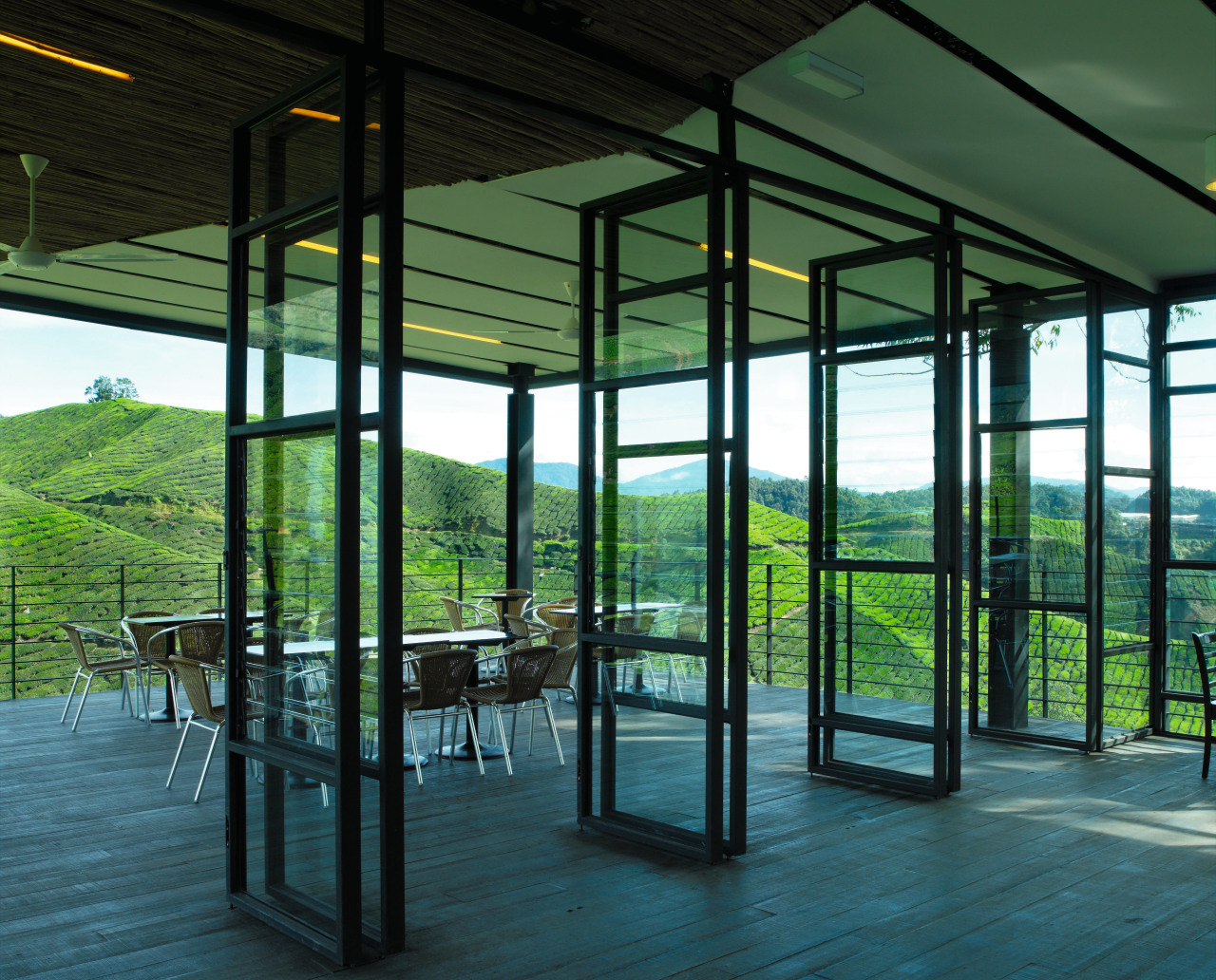Out on a limb
This 145m-long finger of a building cantilevers out over a tea plantation in Malaysia's Cameron Highlands

External influences, such as climate and surrounding landscape, will direct a building's design. A temperate climate makes it possible to design a naturally ventilated building, while a hilltop location may inspire designers to create a cantilevered structure, allowing those inside a heightened experience of the view.
The role of both landscape and climate are evident in the design of the visitor centre at Malaysia's Boh tea plantation.
"The shape of the structure and its location is a direct response to the site," says ZLG Design architect, Susanne Zeidler.
One of the main objectives for the owners of the visitor centre was to provide an opportunity for visitors to experience the landscape. One end of the centre is cantilevered out over a hill, which allows visitors to sit and absorb the sights and aromas of the plantation before they visit the tea processing factory.
The tea plantation's location in the temperate Cameron Highlands allowed the building to be ventilated naturally, rather than using air conditioning.
Much of the building is without solid walls; however, areas that need to be sheltered from the elements, such as the audiovisual area, are enclosed by either glass, brick or concrete walls. To aid natural ventilation, air also flows right underneath the building.
"The building is elevated to provide space underneath the structure a gesture which also reduces impact on the original contour of the terrain.

"Moreover, this makes the building appear to float just above the ground," says Zeidler.
The open design means daylight pours into the building. This reduces the contrast between inside and outside lighting conditions, and allows for maximum external awareness.
The long, thin shape of the building evolved mainly from the restrictions of the site. The visitor centre is situated in the midst of a working tea plantation, so it had to fit in around the existing facilities.
"The building has been designed to allow cutouts in the structure. This meant we could avoid cutting down existing trees or demolishing other important site features," says Zeidler.
Back-of-house support facilities such as the kitchen, store rooms and toilets are expressed as solid cubes, the corners of which jut into the main building, interrupting its linear form.
The narrow design of the building also works in a very practical way. Visitors begin by looking at the view. They then progress down the building, past the exhibition and retail spaces, and when reaching the end of the visitor centre, they can continue straight on to a tour of the tea processing factory.
The building is constructed mainly from steel, concrete, bamboo and timber materials chosen partly to keep building costs low. The natural materials blend with the surrounding environment, while the steel and concrete offer a stark contrast.
The building's facade is made from randomly arranged steel frames, which are paired with either glass or timber. The cantilevered section of the building, which houses the cafe, features movable and fixed glass louvres throughout the facade. The rest of the building's facade is much more open, with the only solid sections made from 6cm-thick timber blocks, neatly fitted together.
"When we first visited the site, we saw these big piles of timber logs, used in the tea-making process. This is where the inspiration came from for the timber sections in the building's facade," says Zeidler.
One of the purposes of the visitor centre is to educate people about the processes of tea making. Rather than confining this information to a purpose-built exhibition space, visitors are exposed to information as they walk through the centre.
"The minute visitors enter, they are immediately confronted with a large, ancient brass grinding plate used for processing tea," says Zeidler.
Ancient machinery is placed throughout the building, and perspex screens suspended from stainless steel wires display information about tea making and the plantation's history.
Credit list
Architect/interior designer
Construction company
Civil engineer
Facade
Roof
Balconies
Flooring
Paints
Project team
Project direction and management
Landscaping
Cladding
Columns
Ceiling
Graphic design
Story by: Trendsideas
Home kitchen bathroom commercial design
From farmhouse to farmstead
Walk this way – garden pathways to lead your thinking
Water, water, not everywhere













